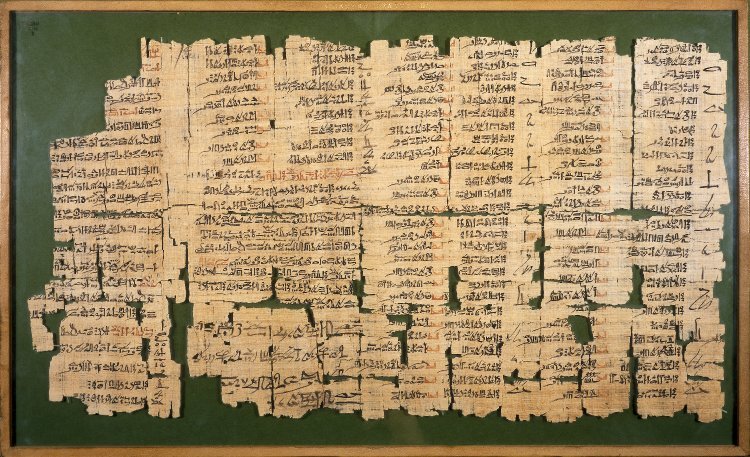Chester Beatty Papyri
The Chester Beatty Papyri are a group of Biblical manuscripts on papyrus. The manuscripts are written in Greek and Christian origin. There are eleven manuscripts in this group: seven contain parts of the Old Testament, three of the New Testament Gregory- Aland no 45, 46 and 47, one is composed of parts of Henochbuchs and an unidentified homily. They are mostly dated to the 3rd century. Most of the pieces are kept in the Chester Beatty Library (Dublin) and at the University of Michigan.
In all likelihood, the papyri have been acquired illegally by antique dealers. For this reason, the circumstances under which the find was made, unclear. One assumption is that the manuscripts were in jars on a Coptic cemetery near the ruins of the ancient city Aphroditopolis. Other theories suggest that the collection was found near Fayyum or that the place was a Christian church or a monastery instead of a graveyard. Most papyri were bought by Alfred Chester Beatty a dealer. According to him, the manuscripts are also named, although some pages and fragments by the University of Michigan as well as other collectors and institutions were acquired.
The papyri were first introduced on 19 November 1931 although in the following decade, further documents were acquired. The papyri were in the years 1933 to 1958 by Frederic G. Kenyon in his eight - volume work, The Chester Beatty Biblical Papyri: Descriptions and Texts of Twelve published Manuscripts on Papyrus of the Greek Bible. The papyri are usually cataloged as P. Chester Beatty, followed by the corresponding roman number between I and XII, one for each manuscript.









